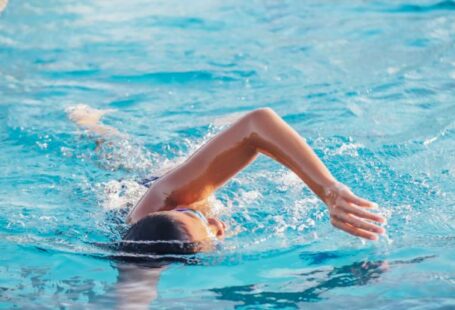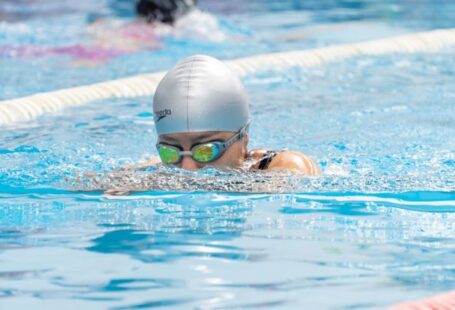Drafting in Triathlon Swimming: Maximizing Efficiency and Performance
Triathlon swimming is a challenging discipline that requires not only physical strength and endurance but also strategic thinking and clever tactics. Among these tactics, drafting, the act of closely following another swimmer, plays a crucial role in enhancing performance and efficiency in the water. In the world of triathlon, where every second counts, mastering the art of drafting can make a significant difference in a competitor’s overall race outcome.
The Concept of Drafting in Triathlon Swimming
Drafting in triathlon swimming involves positioning oneself behind another swimmer in such a way that they break the water ahead, creating a slipstream that reduces resistance for the trailing swimmer. By swimming in the slipstream of another competitor, a triathlete can conserve energy and maintain a faster pace with less effort. This technique is commonly used in open water swims, where the dynamics of the environment and the presence of multiple athletes make drafting a valuable skill to have.
The Benefits of Drafting
1. Energy Conservation: One of the primary benefits of drafting is the energy savings it offers. By swimming behind another competitor, a triathlete can reduce the amount of energy needed to move through the water, allowing them to stay fresher for longer periods during the swim leg of the race.
2. Increased Speed: Drafting not only saves energy but also helps swimmers maintain a faster pace. By riding the slipstream of another athlete, a triathlete can benefit from the reduced drag, enabling them to swim faster than they would on their own.
3. Mental Boost: Drafting can also provide a psychological advantage to triathletes. By staying close to a competitor and using them as a guide, swimmers can feel more confident and motivated, pushing themselves to keep up with the pace and stay competitive throughout the swim.
Strategic Considerations in Drafting
While drafting can offer significant advantages in triathlon swimming, it is essential for athletes to approach this tactic strategically to maximize its benefits. Here are some key considerations to keep in mind when drafting during a race:
– Choose the Right Partner: Not all swimmers are ideal drafting partners. Look for someone who swims at a similar pace or slightly faster, as following a slower swimmer may not provide the desired benefits. It’s important to find a partner who can help you maintain a strong pace without overexerting yourself.
– Maintain Positioning: To make the most of drafting, it’s crucial to stay in the slipstream of the leading swimmer. Position yourself slightly to the side or behind them to take advantage of the reduced resistance. Be mindful of your distance and avoid swimming too close, as this could lead to interference or collisions.
– Be Mindful of Race Rules: While drafting is a common practice in triathlon swimming, it’s essential to adhere to race regulations regarding drafting distances and etiquette. Familiarize yourself with the rules of the event to ensure you are using drafting in a fair and sportsmanlike manner.
Maximizing Drafting’s Potential in Triathlon Swimming
To fully leverage the benefits of drafting in triathlon swimming, athletes must practice and hone their drafting skills through training and race experience. Incorporating drafting drills into swim workouts, such as practicing positioning and pacing behind another swimmer, can help triathletes become more comfortable and efficient in using this tactic during a race.
Additionally, participating in open water swim sessions and simulated race scenarios can provide valuable opportunities to practice drafting in a realistic setting. By gaining experience and confidence in drafting, triathletes can elevate their performance and competitiveness in the water, ultimately leading to improved race outcomes.
Mastering the art of drafting in triathlon swimming requires a combination of skill, strategy, and experience. By understanding the benefits of drafting, approaching it strategically, and practicing regularly, athletes can harness the power of this technique to enhance their efficiency and performance in the water. In the world of triathlon, where every advantage counts, drafting emerges as a valuable tool for athletes looking to excel in the swim leg and achieve their race goals.





